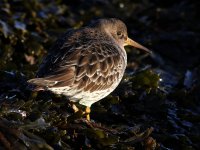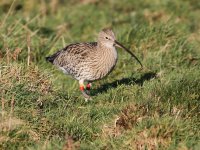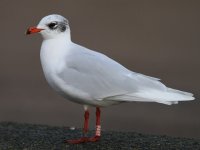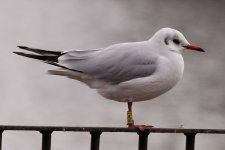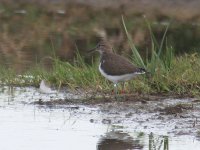Details*received*of Med Gull PAU2 as featured in the header.
Ornithological Station
Museum and Institute of Zoology Polish Academy of Sciences
Nadwiślańska 108, 80-680 Gdańsk 40, Poland
phone (+48 58) 308-07-59, fax (+48 58) 308-09-82
e-mail:
[email protected]
Sightings and recoveries relating to the Polish colour-ringing programme of Mediterranean Gull Larus melanocephalus
Status
O trapped and ringed R roosting
V controlled; ring read * ring found
T controlled; bird trapped A ring added
X found dead C ring changed
& shot
B breeding
Colour ring number: RED PAU2 metal ring number: Gdansk FN 08382
Colour ring position: right tarsus metal ring position: left tarsus
Ringing data
St Date Age Place Coordinates Ringer/observer
OB. 07.05.2006 > 3 CY PACZKOWSKI RESERVOIR, KOZIELNO, WROCLAW, POLAND 50.29 N 16.58 E KOŁODZIEJCZYK, P.
Life history
VB 21.05.2006 > 3 CY PACZKOWSKI RESERVOIR, KOZIELNO, WROCLAW, POLAND 50.29 N 16.58 E KOŁODZIEJCZYK, P.
VB 27.05.2006 > 3 CY PACZKOWSKI RESERVOIR, KOZIELNO, WROCLAW, POLAND 50.29 N 16.58 E KOŁODZIEJCZYK, P.
VB 04.06.2006 > 3 CY PACZKOWSKI RESERVOIR, KOZIELNO, WROCLAW, POLAND 50.29 N 16.58 E KOŁODZIEJCZYK, P.
V 24.07.2006 CRIMDON BEACH, NORTH OF HARTLEPOOL, DURHAM, UK 54.72 N 01.24 W FORSTER, C.
V 18.12.2007 SEATON CAREW, NORTH EAST ENGLAND, UK 54.39 N 01.11 W ROWBOTTOM, M.
V 03.03.2008 AD SCALBY MILLS, SCARBOROUGH, NORTH YERKSHIRE, UK ADDEY, N
V 28.10.2008 WHITLEY BAY, NORTHUMBERLAND, UK 55.03 N 01.27 W HODGSON, M. S.
V 04.01.2009 AD SEATON CAREW, COUNTY DURHAM, UK 54.39 N 01.11 W DEIGHTON, A.
V 25.10.2009 AD NORTH SHIELDS, FISH QUAY, TYNE RIVER MOUTH, UK 55.01 N 01.30 W TURNER, D.
TB 23.05.2010 > 3 CY MIETKOW RESERVOIR, WROCLAW, POLAND 50.59 N 16.40 E KOŁODZIEJCZYK, P.
V 05.10.2010 ST MARY'S ISLAND, NORTHUMBERLAND, UK BULLOUGH, B.
V 21.10.2010 WHITLEY BAY, NORTHUMBERLAND, UK 55.03 N 01.27 W HODGSON, M. S.




